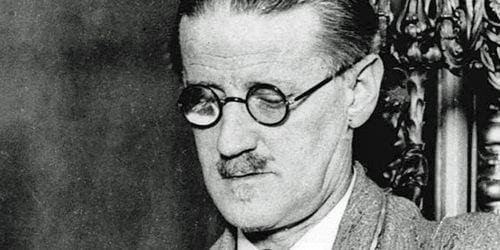
In September of 1904, Oliver St. John Gogarty, medical student, wit, raconteur, and friend to one James Joyce, kicked the budding poet out of their shared lodgings in a Martello tower in Sandycove, Dublin over a debt. Or he left of his own accord, after Gogarty and another friend engaged in a drunken, midnight escapade that ended with careless gunplay. The record is unclear.
Whatever occurred, the incident was the straw that broke the very sensitive camel’s back, the latest in a series of setbacks and disappointments that battered his psyche. Despairing, Joyce asked his future wife Nora Barnacle, “Is there one who understands me?” Joyce resolved to leave Ireland, convinced that his native land could not appreciate what he, as an artist, was trying to do for it.
Today, that Martello tower in Sandycove is called the “James Joyce Tower and Museum” despite the fact he lived there for only about a week (Gogarty, a notable figure in his own right, would later rue living in Joyce’s shadow. He had, in fact, rented the tower for over 20 years). Joyce’s magnum opus, Ulysses, which opens with a fictionalized account of the tower eviction, is seen as a triumph of modernist literature, perhaps the greatest novel ever written, and an honest, heartfelt portrait of Dublin and the Irish people.
“No other writer,” claims Irish novelist Edna O’Brien, “so effulgently and so ravenously recreated a city.” Every June 16th, the day on which the events of Ulysses takes place, Dublin is overrun by admirers who follow in the footsteps of Leo Bloom and Stephan Dedalus and act out passages from the novel.
So it would seem that, ultimately, Joyce found appreciation. But is he understood? He was a man as complicated as his work, and at times it seems that his reputation as a high-minded, intellectual writer obscures his artistic intentions. In James Joyce: A Life, O’Brien provides a rollicking, fast-paced portrait of the artist, his difficult personality, creative genius, and bohemian lifestyle, all of which informed and inspired his transgressive, innovating writing.
At 179 pages, this slim book stands in stark contrast to Richard Ellmann’s much-lauded, definitive biography of Joyce. That hefty tome, widely considered to be the greatest literary biography ever written, is as intimidating as it is revealing. Readers interested in getting a sense of Joyce’s life and history, but not looking to write a dissertation on the man, will find O’Brien’s distillation to be perfectly adequate in terms of detail, and highly entertaining, thanks to her cheeky prose style.
O’Brien tracks Joyce through his difficult childhood and nomadic adulthood, as he zigzags across Europe seeking patrons, eking out a living as a teacher or tutor with his long-suffering wife Nora in tow. Though his body could escape Ireland, his heart and soul never could—his work is deeply imbued with a love of his country and his people even as he publicly railed against their backwardness and stifling morality. “He made no secret of his repulsion for the intellectual torpor around him,” O’Brien writes, “and the craven adherence to mother church.”
Joyce would not serve an old order, in life or in art. He endeavored to blaze his own path, and lived in open rebellion against convention. Needless to say, he was not always an easy man to share a life with.
With A Portrait of the Artist as a Young Man and Ulysses, Joyce did away with the trappings of the traditional novel; all familiar footholds for readers were banished, giving way to a heightened emphasis on the words themselves. “Language is the hero and the heroine, language in constant fluxion and with a dazzling virtuosity,” writes O’Brien, “All the given notion about story, character, plot, and human polarizings are capsized. By comparison, most other works of fiction are pusillanimous.”
Indeed, these works were ahead of their time, but no so much that they frustrated open minded and progressive readers. Finnegan’s Wake pushed further into language, creating a narrative world that turned even avant-garde partisans like Ezra Pound into doubters. Gogarty, itching to knock the debtor poet down a peg so many years later, wrote a scathing indictment of the author’s allegedly insane ramblings. Joyce was undeterred. He had made it “out of nothing at all, with thunderbolts in it.”
He owed nothing to anyone. It was a truly original work, his legacy, even if it satisfied no one but himself.
The same could be said for his life, and O’Brien does an admirable job in helping readers understand this brilliant, sensitive, at times churlish and inconsiderate figure, and how the various strands of his life flowed together to create such magnificent works of art. Her quick elucidation of Finnegan’s Wake is beautiful, with a light, poetic cadence that explains the serpentine narrative without dispelling the mystique that surrounds the story. James Joyce: A Life is a smartly-written crash course that will open doors for readers unsure of how to enter the labyrinthine world of Joyce’s books.
